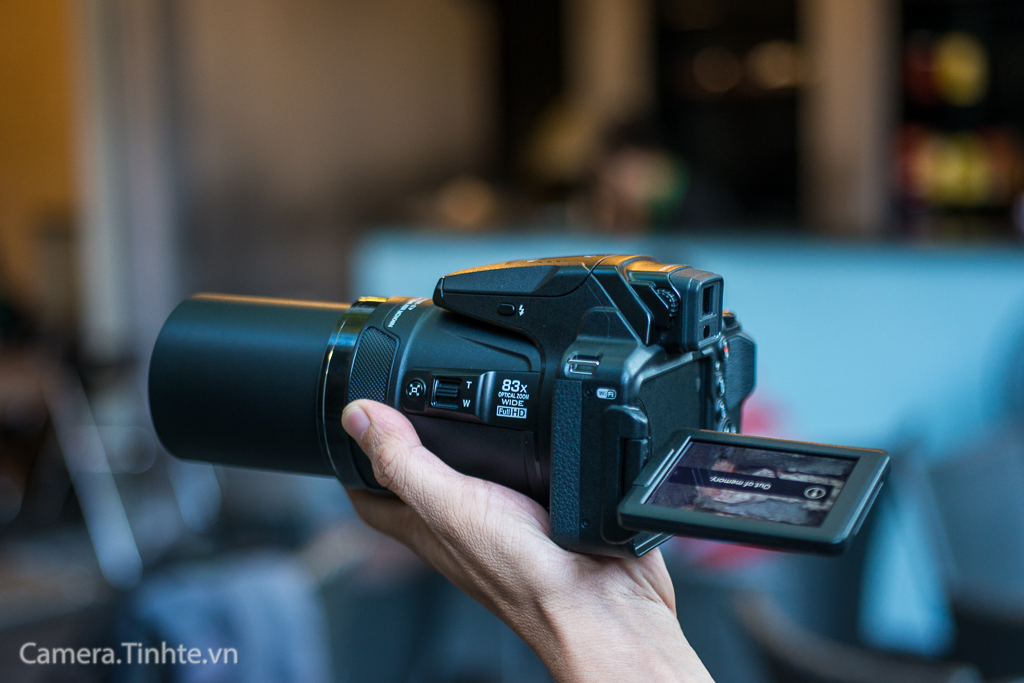

Sunshade mm for nikon p900 full#
If you prefer, you can also use a switch on the left hand side of the lens to extend it from the wide-angle to the telephoto end of the lens.Īttempting to track a subject when the lens is extended to its full length can be tricky, particularly if the subject is non-static. However, if zoom is particularly important to you - such as for nature photographers - then you’ll likely be happy to consider the unbalanced nature of the camera a worthy sacrifice.Īt the top of the camera’s grip you’ll find the shutter release button, as well as one of two ways to zoom the lens in and out.

If you think that the Nikon Coolpix P950 looks big, wait until you extend the zoom lens - the chances of remaining discreet while wielding this are pretty slim. There’s a chunky grip at the front of the camera, while much of the camera has a textured coating which helps to give a feeling of high quality.

Of course, what it offers is the equivalent of a DSLR and a bag full of lenses, so it still makes sense as a travel type of camera for those who want to travel reasonably light.įor those who already owned a P900 camera, very little has changed on the outside of the camera. In fact, you’d be forgiven for mistaking it for a DSLR from first glance. Ease of Useīy standard bridge camera sizes, the Nikon P950 is a very large offering. You can still find the older P900 model in some retailers for £449, while the P1000 will set you back £899.
Sunshade mm for nikon p900 iso#
Up to 7fps shooting, raw format support and a native ISO range topping out at ISO 6400 also remain from the previous iteration of the camera.Īimed pretty squarely at nature photographers, the Nikon P950's price is (at the time of writing) £799 / $799. This focal length puts it below the even longer Nikon P1000 camera, which offers 3000mm (equivalent), but still makes it one of the longest zoom lenses in the bridge camera market.Īlso staying the same as its predecessor is the 16 megapixel 1/2.3-inch sensor, but there are other improvements to be enjoyed, including a better 2.4-million-dot electronic viewfinder and 4K video recording. It features an 83x optical zoom, giving you a whopping 24-2000mm (equivalent) focal length - which is the same length as its predecessor, the P900. Simply type that followed by lens hood into a search bar and the lens hood for that lens will pop up.Announced at the very beginning of 2020, the Nikon Coolpix P950 is a new bridge camera. For instance, the image below shows the front of a canon lens and states ‘Canon zoom Lens EF 24-105mm’. To find out what lens you have, simply look at the front of it and read off what it says. They will not work as well as one made specifically for your lens.

Now you do not need to get the branded lens hood for your lens but please avoid any lens hood that states they are universal. The wider the angle of view the further back the cut outs need to be on a petal lens hood. The zoom range is also different meaning the cut-outs bits need to be different. The reason for this is the circumference of the front of the lenses are different, one is 77mm and the other is 82mm. For instance, I have the canon 24-105 zoom and the 16-35 zoom lenses and they both need different lens hoods. You have to get the lens hood for your particular lens. Is it a one size fits all scenario? The simple answer to that is no, one size doesn’t fit all. To learn more about lenses and focal lengths, click here. This is because these lenses do not go to wide angles, therefore the lens hood will not be seen. Telephoto lenses, lenses used for sports and wildlife photography, can also have cylinder lens hoods. They are shaped like this because prime lenses don’t zoom out, these lenses are fixed to a particular focal length so the hoods can be made to the exact point where it won’t be seen in the image. They are made for fixed focal range lenses (prime lenses) and telephoto lenses. Then you have cylinder lens hoods, and these are perfect cylinders with nothing cut away. To put this to the test do this – zoom your lens out to its widest angle look through the viewfinder and move your hand forward adjacent to the lens and you’ll see the hand appear in the corners. You would see black in the corners of your picture, which isn’t a good look! This is because if you didn’t have the corners cut out you would actually see the lens hood in the image at wide angles. These types of hoods are used on your standard zoom lenses and lenses that go to wider angles. Petal lens hoods have the corners cut away.


 0 kommentar(er)
0 kommentar(er)
